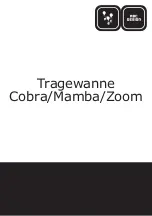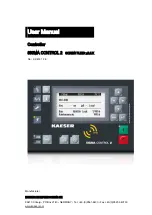
4
6-22-00
Fig. 4
Using Two MIRV1's to Control One
RAT1 for a Large Room or Area
S8
S4
S2
S1
L+ L– R– R+
L+ L– R– R+
AMPLIFIER
INPUT
SPEAKER
OUTPUT
STATUS
POWER
IR IN
ST
A
TUS
GND
+12VDC
12VDC
R
L
+
–
+
–
R
L
+
–
+
–
780-80
"J" Box
IR Receiver
MIRV1
Volume
Controller
MIRV1
Volume
Controller
ST G
V
IR
ST
G V
IR
FROM AMPLIFIER
SPEAKER TERMINALS
786-00
782-00
Power Supply
XANTECH
S-62/64/66
Wall Speakers
4-Conductor Bus
Status Power Supply
(see text, item 3, pg 5)
LARGE ROOM OR AREA
RAT1
REMOTE AUTO TRANSFORMER
SYLMAR, CA
®
To
120 V AC
(unswitched)
Also, a 780-80 is used to give the added convenience of IR control and a status indicator voltage is supplied.
The system is configured as follows:
1. The second MIRV1 and the 780-80 are simply wired in parallel with the first MIRV1 on the same 4-
conductor "bus" as shown.
NOTE:
When making the 4-conductor bus connections, be sure to carefully match up the terminals
according to their markings as follows:
IR IN, STATUS (ST), GND (G) and +12V (V).
2. In this system, each MIRV1 follows or tracks the other whether the volume adjustment is done
manually at either MIRV1 or by IR remote control through the 780-80 IR Receiver. As the knobs rotate,
the LED Status Indicators will blink until the knob and the RAT1 come to rest at the desired volume
setting.
3. A 786-00 supplies 12V DC to light the LED STATUS indicators in the MIRV1 knobs and on the 780-
80 when the A/V system is turned ON. (See the RAT1 installation instructions for details regarding the
implementation of Status ON/OFF indicator systems).
NOTE:
The LED Status indicators in the MIRV1 knobs will:
a) go ON/OFF when the A/V system is turned ON/OFF (if a Status power supply system is connected).
b) blink while rotating with the A/V system ON.
c) blink while rotating with the A/V system OFF. Be aware that this latter condition allows volume
settings without the presence of audible sound (since the A/V system is OFF!).
Condition c) results from the MIRV1/RAT1/IR system being continuously powered (by the 782-00
power supply). Continuous powering is necessary so that remote ON/OFF commands can be
executed through the IR bus system to the A/V system regardless of the A/V system's ON/OFF status.
4. Since a single RAT1 is used, in this
case, in a dedicated IR Bus system with
two MIRV1s, each device operates with
the same IR Code Group number as
received from the factory.
Note: When shipped from the fac-
tory, the MIRV1 & the RAT1 are set to
code group number 30. Be sure to
set the RC68+ to the same number.
If a particular system requires more
than one code group number, refer to
the RC68+ Programmer instructions for
code group setting procedures.
5. Since only two pairs of 8-Ohm speakers
are used with one RAT1 and the ampli-
fier is assumed to be capable of han-
dling an impedance of 4-Ohms, the
impedance jumpers are set to S1.
Fig. 3
and
4
are provided to show the
basic connections required between the
MIRV1 & the RAT1. For examples of
more advanced multi-room systems, re-
fer to the RAT1 installation instructions.
MIRV1






















